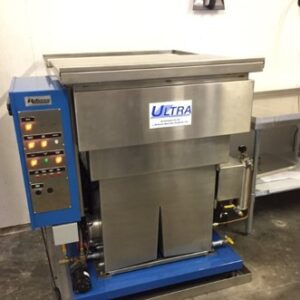Desaturation Testing Services | CORE Forensics
Unmasking the Truth: How Desaturation Testing is Revolutionizing Forensic Investigations – Insights from CORE Forensics
Desaturation testing is an important aspect of roofing inspections that involve the vapor degreasing of samples of built-up roofing (BUR) systems to determine if hailstone impacts have compromised the fiberglass mats. This testing aims to identify any fractures in the fiberglass mats that may not be visible to the naked eye. At CORE Forensics, we explore the importance of desaturation testing and its benefits in identifying any underlying damage to the BUR system.
What is Desaturation Testing?
Desaturation testing is a procedure that involves the vapor degreasing of roofing samples to evaluate the condition of the fiberglass mats. During this process, the fiberglass mats are exposed to a vapor degreaser that removes the asphalt and bitumen from the plies. This makes it possible to inspect the fiberglass mats for any fractures or damage that hailstone impacts, or other weather-related incidents may have caused.


Why is Desaturation Testing Important?
Desaturation testing is crucial in identifying any underlying damage to the BUR system. While hailstone impacts may not be visible to the naked eye, they can cause significant damage to the roofing system. This damage can lead to leaks, which can cause significant damage to the interior of the building. By identifying any fractures or damage to the fiberglass mats, desaturation testing can help prevent leaks and extend the roofing system’s life.
Benefits of Desaturation Testing
There are several benefits of desaturation testing. First, it helps to identify any underlying damage to the BUR system. This can help prevent leaks and extend the life of the roofing system. Second, desaturation testing is a non-destructive testing method, which means that it does not damage the roofing system. Third, desaturation testing is cost-effective and can be performed quickly and efficiently.
We’re Here to Help – Contact Us Now
Our experienced team of professionals is ready to assist you with all your testing needs. To learn more about our services or to schedule a consultation, please contact us today.
Frequently Asked Questions
A built-up roofing (BUR) system is a type of roofing system that is made up of multiple layers of asphalt and fiberglass or other reinforcing materials. These layers are applied to the roof in a series of plies, which are then covered with a layer of gravel or granules to protect the roofing system from UV rays.
ASTM D2829 is a standard test method for determining glass fiber-reinforced roofing membranes’ tensile strength and elongation.
Desaturation testing should be performed as part of a regular roofing maintenance program. The testing frequency will depend on the age and condition of the roofing system, as well as the climate and weather conditions in the area. As a rule, desaturation testing should be performed every 5-10 years.
Desaturation testing best suits granule or gravel-surfaced built-up roofing (BUR) systems. However, it can also be performed on other types of roofing systems, including single-ply roofing systems, to evaluate the condition of the fiberglass or other reinforcing materials.
The duration of desaturation testing will depend on the size of the roofing sample being tested. Typically, the process can be completed in a few hours, although larger samples may take longer.
